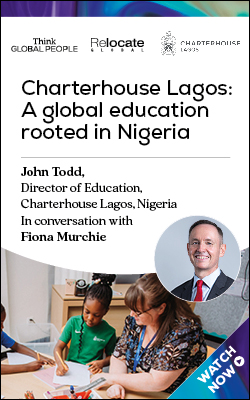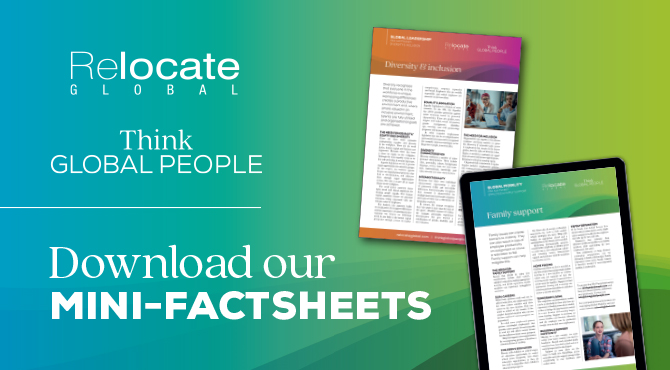What does the millionaire migration mean for schools?
High net worth migration is a growing global trend. How will this impact schools and colleges that cater to international citizens and globally mobile families, and which countries will be the beneficiaries? Marianne Curphey learns more.

This article is taken from the Summer 2025 issue of
Think Global People magazine
View your copy of the Summer 2025 issue of Think Global People magazine.As global wealth continues to shift across borders, 2025 is shaping up to be a pivotal year for high-net-worth individual (HNWI) migration. According to international wealth and investment migration specialists, Henley & Partners, the UK is expected to lose around 9,500 millionaires this year – the highest outflow globally. But where are they going—and what ripple effects will this migration have, particularly on education systems in their new host countries?Dr Juerg Steffen, CEO of Henley & Partners, says last year 134,000 high-net-worth individuals relocated and established new domiciles worldwide. This exceeded initial forecasts, driven by migration to the UAE, US, and Italy, alongside higher than expected departures from the UK. He predicts 142,000 high-net-worth individuals will seek new horizons in 2025.“This represents the most significant wealth migration wave ever documented and reflects fundamental changes in how affluent individuals approach geographic and financial planning,” he says. The definition of high-net-worth is an individual with liquid investable wealth of USD $1 million or more.
Why millionaires are moving
Henley & Partners predicts that while the UK, China, India, Russia and South Korea will lose many of their millionaires in 2025, the UAE looks set to take first place as the world’s leading wealth magnet. Wealthy people are moving for a variety of reasons, including concerns over geopolitical tensions, economic uncertainty, and social upheaval. Other considerations that are important to high net worth families are safety and security; taxes and retirement; work and business opportunities; schooling and education for their children; healthcare; quality of life; and standard of living.Despite uncertainty in the US, it still has 11 cities on the Top 50 Cities for Millionaires list in the latest World’s Wealthiest Cities Report 2025 ranking, led by New York in first place, followed by San Francisco and Silicon Valley, according to the fourth edition of the annual report published by Henley & Partners in collaboration with global intelligence firm New World Wealth.Outside the US, the tech and financial centres of Shenzhen and Hangzhou in China, and Dubai are seeing a huge rise in the number of wealthy people living there, followed by Tokyo and Singapore. London and Moscow are the biggest losers of incoming HNWIs.Several factors are driving the exodus in the UK:- Tax uncertainty, especially over potential changes to non-domicile rules and wealth taxes
- Political instability and shifts in regulation
- Concerns about personal safety and quality of life
Top destinations for millionaire migration
The new top destinations for millionaire migration are as follows and reflect a common theme: stability, low taxes, and opportunity.UAE: Dubai continues to attract HNWIs due to zero income tax, luxury lifestyle, and global connectivity.Australia: Particularly popular among Asian HNWIs, the country offers quality education and a secure environment.Singapore: Combines economic growth with safety, security and high educational standards.US: Despite high taxes, elite networks and access to top-tier education still attract wealth, with the Bay Area in the US now having more billionaires than in New York.Despite this, according to Harvey Law Corporation, 53% of American millionaires are contemplating leaving the US. This figure rises to 64% among millennials and Gen-Z millionaires (aged 18-29), who express a strong interest in securing golden visas abroad.Rising demand for schools and colleges
The migration of wealthy families is creating noticeable shifts in education sectors, particularly in private schools and international colleges across host countries. There is a rising demand for elite international schools, as well as a growing market for local families whose wealth is increasing.In countries like Dubai and Singapore, enrolment in British and American-curriculum schools is rising sharply. Schools are also expanding capacity and increasing tuition to match demand. New “wealth corridors” are forming in areas where luxury schooling options are concentrated. For example, in the UAE, there are 237 international schools in two different cities, Dubai-Sharjah-Ajman and Abu Dhabi. Dubai has a number of notable international schools with links to other countries, including Nord Anglia International School Dubai, Royal Grammar School Guildford in Dubai and Repton School Dubai. GEMS also has a number of modern, newly-built schools across Dubai.The latest data from ISC Research also reveals sustained growth in the international schools sector, including rising school and student numbers, increased staff recruitment, and higher total annual fee income.Asia continues to dominate the sector with 58% of the world’s schools based in the region, the report says. The rise of multinational corporations in countries like Japan, Malaysia, and South Korea is driving large expatriate communities who opt for the stability of international schools’ globally recognised curricula and English language instruction.The two countries with the most international schools are China and India, and as of January 2025, the international school market generates USD $67.3 billion in total annual fee income, representing a 22% increase since January 2020.Read related articles
- Tracking global wealth migration
- The global educational landscape: Key trends and challenges
- The global mobility versus global fertility conundrum
- Millionaires on the move: migrating the world’s top 1%
Competition for top-tier education
In some regions, the influx of wealth is increasing competition for prestigious places, including in IB programmes and international colleges. Institutions are responding by expanding campus footprints and tailoring offerings to HNW families’ expectations, including global university placements.The Henley Opportunity Index, published earlier this year, revealed the impact of education and global citizenship on generational success, and found that Switzerland, Singapore and the US lead the ranking of top investment migration programmes for accessing opportunities for future generations to thrive and maximise their career and income potential.It found that many wealthy migrants choose countries not just for lifestyle, but for access to education pathways for their children. Golden visa and investment migration programmes (e.g. in Portugal, Greece and the UAE) are tied directly to education opportunities for children and young people.In emerging markets such as Africa, private equity firms have been investing in education. Under a long term plan, the Chinese government is also working with UNESCO to develop more higher education institutions in Africa.International schools
Top UK institutions like Eton and Harrow public schools and universities such as Oxford and Cambridge remain attractive to home and overseas students. Many international schools have also set up new campuses in emerging and established markets in order to capitalise on their own international kudos.The 2024 COBIS Annual Research survey found that student numbers in COBIS schools remain consistently strong, with 58% of responding schools reporting an increase in student numbers compared to last year.A further 39% have seen a notable or significant change to the nationalities that make up their student bodies in the past two years. These changes vary from region to region, but increases in Chinese, Russian, and Ukrainian nationals are the most common responses. A key challenge for international schools is recruiting and retaining the right teaching staff.The same survey found that 91% of leavers from COBIS Schools (from 2023/24) went on to university. Of those, 39% of those leavers went on to university in the UK (down from 45% in 2023 and 44% in 2022). The report suggests that the cost of a UK education might be one reason for the decline in numbers.Research by the International Schools Database found that the US and China are the most expensive countries in the world for international education, with six cities in the top ten between them. Despite its reputation as an expensive region, the Middle East did not rank as costly in terms of education. Within Europe – Spain, Portugal, Denmark and Bulgaria – were among the locations that had the cheapest international schools, although South Africa and Malaysia were the cheapest.Migration is about more than just relocation for business or tax purposes, it also involves a choice around where future generations will be raised and educated. As reports show, cost is one factor that families are considering when choosing where and how to educate their children. Overall, countries that offer a combination of political stability, top-tier schooling and personal freedom, are emerging as the preferred destinations for international families.
Find out more about the Think Global People and Think Women community and events.
Subscribe to Relocate Extra, our monthly newsletter, to get all the latest international assignments and global mobility news.Relocate’s new Global Mobility Toolkit provides free information, practical advice and support for HR, global mobility managers and global teams operating overseas.
©2025 Re:locate magazine, published by Profile Locations, Spray Hill, Hastings Road, Lamberhurst, Kent TN3 8JB. All rights reserved. This publication (or any part thereof) may not be reproduced in any form without the prior written permission of Profile Locations. Profile Locations accepts no liability for the accuracy of the contents or any opinions expressed herein.








































